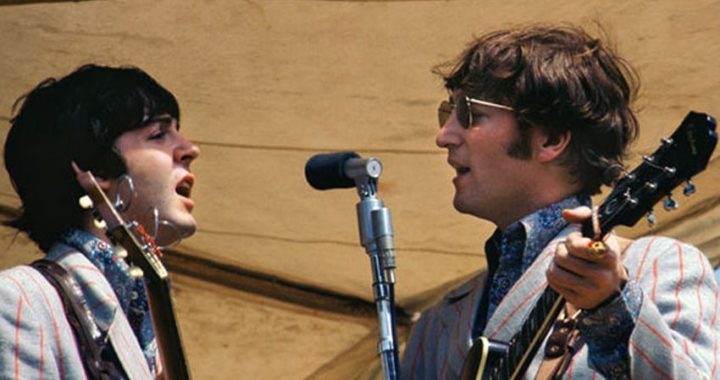 Get the eBooks that thousands of songwriters are using to polish their songwriting technique. “The Essential Secrets of Songwriting 10-eBook Bundle” shows you every aspect of how to take your writing to a new level of excellence.
Get the eBooks that thousands of songwriters are using to polish their songwriting technique. “The Essential Secrets of Songwriting 10-eBook Bundle” shows you every aspect of how to take your writing to a new level of excellence.
One of the most impressive aspects of Lennon & McCartney songs is the incredible diversity. It seems that once they had a hit, they’d rewrite their own book on how to write songs. As a consequence, there’s an amazing sense of variety when you look at one hit and compare it to others in their catalogue.
A sample list:
- Help!
- Yellow Submarine
- Hello Goodbye
- Hey Jude
- Get Back
If you were completely unaware of the music of Lennon & McCartney, you’d be forgiven for thinking that those five songs were written by five different writers, such is their diversity of style.
There are good reasons for developing a diverse songwriting style. I can think of three right away:
- You have a greater chance of building a larger audience base.
- Fans are less likely to tire of your sound.
- You’re more likely to avoid writer’s block.
If you find that your songs suffer from an unpleasant sameness, the first step in solving that is to recognize that it’s happening. But why your songs sound the same may not be so obvious. So for each song, think about the following:
- Tempo. This is an easy one to check. Do you seem to favour the same (or almost the same) tempos? If everything is a mid-tempo ballad, that’s a problem.
- Key (Even just major/minor). If all your songs are in G major, that’s going to produce a very obvious sameness that will be distracting to listeners. But also consider this: If all your songs are in a minor key — any minor key — or all major, you’ll have the same problem, regardless of the actual key.
- Chord progressions. For most songs in the pop genres, shorter progressions work just fine. But if every song uses the same I-IV-V-I type of progression, you need to find progressions that go beyond.
- Subject matter. Yes, love songs still sell, and they sell big. But if every song you write is about how you were jilted by some lover in your past, audiences will quickly get the “all right, we get it!” feeling.
- Melodic shape. It’s not at all unusual to find yourself creating melodic ideas that have a slight sense of similarity. Even classical composers favoured certain melodic shapes. It’s part of what allows us to listen to a Mozart symphony and say “Yes, that’s Mozart.” This is a tricky one, because trying to write melodies that sound completely different, but still excellent, often takes you out of your comfort zone. And it requires you to really listen to your melodies, and find ways to avoid favouring the same shapes and ideas.
- Song form. Are you discovering that all your songs are in verse-chorus-bridge design?
- Performance style. Do you use the same vocal technique, the same guitar performance style, the same instrumentation, the same kind of backing rhythms, and then make the same production decisions from one song to the next? This isn’t a songwriting issue, but it’s very important to give your audience something different with every song.
Like anything in songwriting, it can take a while to develop good song analysis chops, and your first attempts may not yield great results. But once you’ve been doing it for a while, you start to become better at seeing where the surprising similarities lie, and then how to subtly change your music to make for a more diverse catalogue.
 Written by Gary Ewer. Follow Gary on Twitter.
Written by Gary Ewer. Follow Gary on Twitter.
 Ever come up with a great melody, but get stuck at the “how to add chords to it” stage? “How To Harmonize a Melody” shows you, step-by-step and with sound samples, how it’s done. It describes chord function, and how to discover chord substitutions that might work. It’s part of “The Essential Secrets of Songwriting” 10-eBook Bundle.
Ever come up with a great melody, but get stuck at the “how to add chords to it” stage? “How To Harmonize a Melody” shows you, step-by-step and with sound samples, how it’s done. It describes chord function, and how to discover chord substitutions that might work. It’s part of “The Essential Secrets of Songwriting” 10-eBook Bundle.










